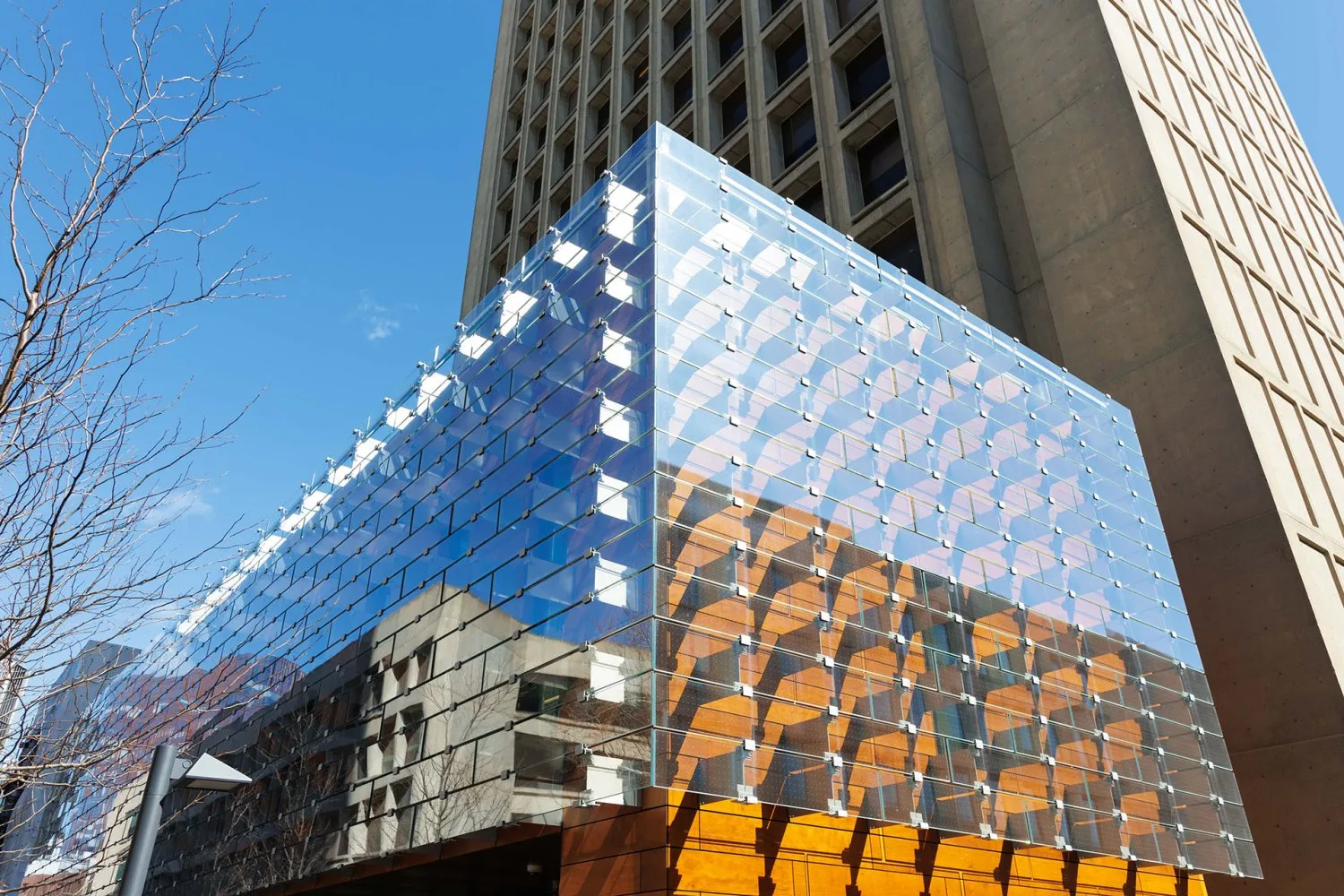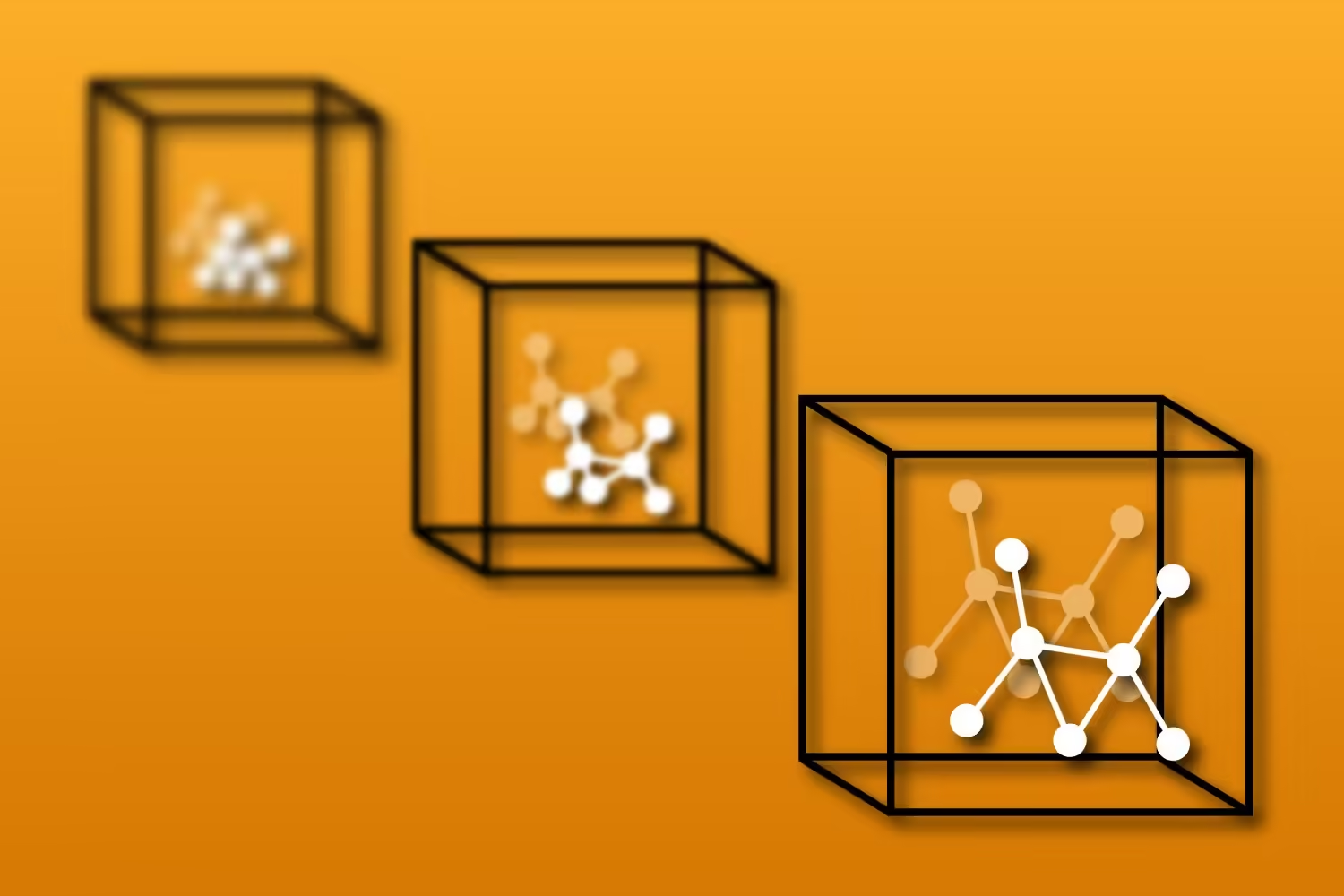From a distance, the Cecil and Ida Green Building (Building 54) at MIT, designed by renowned architect and MIT alumnus I.M. Pei ’40, stands as one of the most iconic structures in Cambridge, Massachusetts. Housing the Department of Earth, Atmospheric, and Planetary Sciences (EAPS), this 21-story concrete tower, topped with its distinctive spherical radar dome, dominates the campus skyline. However, up close, it was a different story.
Previously, a two-story, sunless outdoor plaza beneath the tower served as an unremarkable entrance to the department’s offices, labs, and classrooms above. « It was cold and windy—probably the windiest spot on campus, » said Robert van der Hilst, head of EAPS and Schlumberger Professor of Earth and Planetary Sciences, addressing a packed auditorium inside the building in March. « You would pass through the elevators and disappear into the hallways, not to be seen again until the end of the day. »
Van der Hilst spoke during a ribbon-cutting event celebrating the opening of the newly renovated and expanded space, 60 years after the Green Building’s original dedication in 1964. In a dramatic transformation, the perpetually shaded area beneath the tower has been filled with an airy, glass-enclosed space that is as welcoming as the previous space was forbidding.
Designed to meet LEED Platinum certification, the new Tina and Hamid Moghadam Building (Building 55) appears to float beside the Brutalist tower, its glass façade opening up the interior while reflecting sunlight and surrounding greenery. The 300-seat auditorium in the original tower has been similarly transformed, bringing light and space to the new Dixie Lee Bryant Conference Room, named after the first person to earn a degree in geology at MIT.
Fostering Collaboration
The project goes beyond modernizing a neglected space. « The building we are here to celebrate today does something else, » said MIT President Sally Kornbluth at the inauguration.
« Through its lightness, through its transparency, it draws attention not to itself, but to the people gathered inside. In its warmth, its openness, it makes room for culture and community. And it welcomes those who are not yet part of it… as we together tackle the immense challenges of climate, » she continued, referencing the recent launch of the MIT Climate Project—a pan-MIT initiative aimed at innovating bold solutions to combat climate change. In MIT’s famously decentralized structure, the Moghadam Building provides a new physical hub for students, scientists, and engineers interested in climate and environmental issues to gather and share ideas.
From the outset, fostering this type of multidisciplinary collaboration was part of Van der Hilst’s vision. In addition to serving as the flagship site for EAPS, Building 54 has long been the administrative home of the MIT-WHOI Joint Program in Oceanography/Applied Ocean Science and Engineering—a graduate program in partnership with the Woods Hole Oceanographic Institution. With the addition of Building 55, EAPS is now joined by the MIT Environmental Solutions Initiative (ESI)—a campus-wide program promoting education, outreach, and innovation in Earth system science, urban infrastructure, and sustainability—and will host closer collaboration with Terrascope—a first-year learning community that challenges its students to tackle real-world environmental issues.
A Shared Vision Comes to Life
The construction project was part of a long-awaited renovation of the Green Building. After a multi-year fundraising campaign led by Van der Hilst, the project received a major boost from lead donors Tina and Hamid Moghadam ’77, SM ’78, allowing the department to break ground in November 2021.
In Moghadam, CEO of Prologis, which owns 1.2 billion square feet of warehouses and other logistics infrastructure worldwide, EAPS found another champion of climate and environmental innovation. By installing solar panels on Prologis buildings’ rooftops, the company is now the second-largest onsite solar power generator in the United States. « I don’t think you need to compromise between good economics, return on investment, and solving climate change issues, » Moghadam said at the inauguration. « The solutions that really work are the ones that make sense in a market economy. »
The architecture firm AW-ARCH designed the Moghadam Building with a light touch, emphasizing space in contrast to the heavy concrete buildings surrounding it. « The kind of delicacy and fragility of the thing is somewhat a representation of what’s happening here, » said architect and co-founding partner Alex Anmahian at the ribbon-cutting reception, nodding to the study of the Earth’s delicate balance. This sense is further illustrated by the façade’s responsiveness to the environment, making the glass alternately reflective and transparent depending on the time of day and quality of light.
Inside, the 11,900-square-foot pavilion is highly flexible and showcases the science happening in the labs and offices above. At the center of the space is a 16-foot by 9-foot video wall displaying striking images of fieldwork, lab research, data visualizations, and natural phenomena, visible even to passersby outside. The video wall faces an unassuming set of stair-step bleachers leading to the second floor, which could host anything from a scientific lecture to a community pizza and movie night.
Van der Hilst referred to his vision of the atrium as a « campus living room, » and the furniture is intentionally chosen to allow for impromptu rearrangements, providing a valuable public space on campus for students to work and socialize.
The second level is also adaptable, featuring three classrooms equipped with state-of-the-art teaching technologies that can be transformed from one large space for a hackathon into intimate discussion rooms.
« The space is really meant for an as-yet-unforeseen experience, » Anmahian explains. « The reason it’s so open is to allow for all possibilities. »
The inviting and dynamic design of the pavilion has also quickly become a point of pride for building occupants. At the inauguration, School of Science Dean Nergis Mavalvala joked that anyone entering the space « gains two inches in height. »
Van der Hilst cited a colleague making a similar observation: « Now, when I walk into this space, I feel respected by it. »
The Perfect Complement
Another significant element of the project is the List Visual Arts Center’s Percent-for-Art Program installation by conceptual artist Julian Charrière, titled « Everything Was Forever Until It Was No More. »
Comprising three interrelated works, the commission includes: « Not All Who Wander Are Lost, » three glacial erratic boulders resting on their own cores in the surrounding green space; « We Are All Astronauts, » a trio of glass pillars containing vintage globes with distinctions between nations, land, and sea removed; and « Pure Waste, » a synthetic diamond embedded in the foundation, created from carbon captured from the air and the breath of researchers working in the building.
Known for his themes exploring the transformation of the natural world over time and humanity’s complex relationship with our environment, Charrière was the perfect fit to complement the new Building 55—offering a thought-provoking perspective on our current environmental challenges while highlighting the value of the research taking place within its walls.



